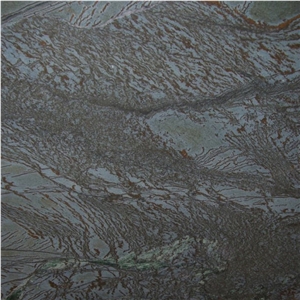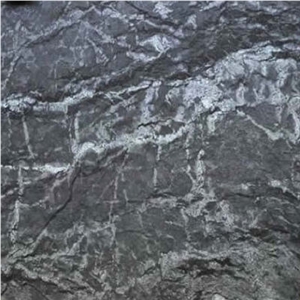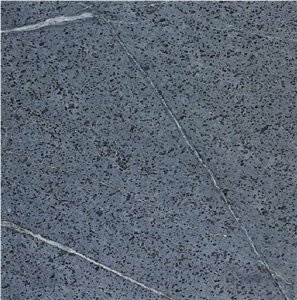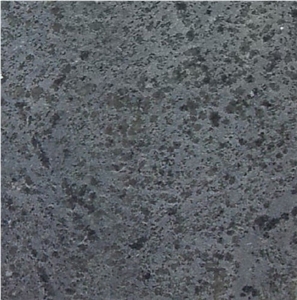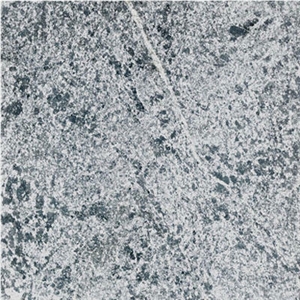Grey Soapstone in India
( 5 )
Color:
Country:
- 1
-
Can Peru's Marmolina Soapstone be used in floor coverings?Yes, Perus Marmolina Soapstone can be used in floor coverings. Soapstone is a metamorphic rock that is known for its durability and natural beauty. It is a popular choice for flooring due to its ability to withstand heavy foot traffic and its resistance to stains and scratches. Marmolina Soapstone, specifically from Peru, is known for its unique color variations and veining patterns, which can add elegance and character to any floor space. However, it is important to note that soapstone is a softer stone compared to materials like marble or granite, so it may require regular sealing and maintenance to keep it in good condition.Read More
-
Can India's Ocean Black Soapstone be used in landscaping?Yes, Indias Ocean Black Soapstone can be used in landscaping. It is a natural stone with a black color and a smooth texture, making it an attractive choice for various landscaping applications. It can be used for pathways, steps, outdoor flooring, garden edging, or even as decorative accents in gardens or outdoor spaces. Indias Ocean Black Soapstone is durable and weather-resistant, making it suitable for outdoor use in landscaping projects.Read More
-
Is United States's Church Hill Soapstone an expensive stone?I dont have access to current market prices or real-time price fluctuations. However, Church Hill Soapstone is known for its durability, heat resistance, and unique coloration. It is considered a premium quality soapstone and may be more expensive than other types of soapstone. Its price depends on several factors such as its availability, quality, size, and shape, among others. Its best to consult with a professional stone fabricator or supplier to obtain accurate pricing information.Read More
-
Are there color variations of Brazil's Belvedere Soapstone?Yes, there are color variations of Brazils Belvedere Soapstone. The soapstone can range from light gray to dark gray, and may have white or green veins running through it. The color variations are natural and depend on the specific quarry where the soapstone is sourced from.Read More
-
What is the coefficient of friction of Acid Washed Finish Brazil's Java Black Soapstone tiles?The coefficient of friction of Acid Washed Finish Brazils Java Black Soapstone tiles cannot be determined without further information. The coefficient of friction is specific to a particular surface or material and can vary based on factors such as the texture, finish, or presence of any additives.Read More
-
Can Finland's Kivia Blue Soapstone be used in floor coverings?Yes, Finlands Kivia Blue Soapstone can be used in floor coverings. Soapstone is a durable and heat-resistant material, making it suitable for flooring applications. It has been used for centuries in various architectural and design projects, including floor coverings. The Kivia Blue variant specifically is known for its blue-gray color and unique veining patterns, making it an aesthetically pleasing choice for floors. However, it is always recommended to consult with a professional to ensure that the soapstone is properly installed and maintained for floor use.Read More
-
Is United States's Hazel Eyes Soapstone an expensive stone?I do not have access to the current market prices of stones like Hazel Eyes Soapstone. However, soapstone is generally considered a moderately priced stone. However, the price may vary depending on factors such as the quarry location, size, quality, and availability. Its always a good idea to check with a local supplier or stonemason for pricing information.Read More
-
Can Brazil's Pratima Soapstone be used in a bathroom?Yes, Brazils Pratima Soapstone can be used in a bathroom. It is a durable and resistant material that can withstand moisture and water. It can be used for countertops, sinks, and even as wall and floor tiles. However, like any natural stone, it requires regular maintenance to prevent stains and discoloration. It is recommended to seal the soapstone periodically to maintain its beauty and durability.Read More
-
Can United States's Vermont Soapstone be used in floor coverings?Yes, Vermont Soapstone from the United States can be used as a material for floor coverings. Soapstone is a natural stone known for its durability and heat-resistant properties, making it suitable for various applications including flooring. It has a smooth, non-porous surface and can be polished to create an attractive and functional floor. Vermont Soapstone, in particular, is highly regarded for its quality and is commonly used for countertops, sinks, and flooring due to its beauty and strength.Read More
-
Are there color variations of Peru's Marmolina Soapstone?Yes, there are color variations of Perus Marmolina Soapstone. Marmolina Soapstone is available in a range of colors, including shades of white, gray, green, and brown. The specific color variations can depend on the quarry and the specific stone deposit from which the soapstone is extracted. Different regions within Peru may have different variations in color and pattern of Marmolina Soapstone.Read More
-
Can Brazil's Floresta Soapstone be used in a kitchen?Yes, Brazils Floresta Soapstone can be used in a kitchen as it is a popular material for countertops, backsplashes, and sinks. It is heat-resistant, non-porous, and durable, making it a practical choice for high-traffic areas like a kitchen. Furthermore, it has a unique and beautiful natural texture that can add elegance to any kitchen design. However, it requires regular maintenance, including oiling and waxing, to keep it looking its best.Read More
-
Can India's Kannada Soapstone be used in a office?Yes, Indias Kannada Soapstone can be used in an office setting. Kannada Soapstone is a type of metamorphic rock known for its durability and aesthetic appeal. It is commonly used as a decorative material in various applications, including countertops, flooring, and sculptures. In an office, Kannada Soapstone can be used for countertops, tabletops, or even decorative elements such as vases or bookends. Its natural beauty and unique patterns can add a touch of elegance and sophistication to any office space.Read More
-
Can United States's Alberene Soapstone be used in a kitchen?Yes, Alberene Soapstone from the United States can be used in a kitchen as it is a durable and heat-resistant material that is resistant to stains and scratches. It is often used for countertops, sinks, and stove surrounds in kitchen designs.Read More
-
How thick is Brazil's Julia Soapstone slabs?The thickness of Brazils Julia Soapstone slabs can vary depending on the supplier and the specific requirements of the customer. However, common thickness options for soapstone slabs, including Julia Soapstone, range from 2 cm (3/4 inch) to 3 cm (1 1/4 inch) thick.Read More
-
Can United States's Ice Flower Soapstone be used exterior applications in cold climates?It is unclear whether United States Ice Flower Soapstone can be used for exterior applications in cold climates without further information. The suitability of this soapstone for outdoor use will depend on its specific composition, density, and resistance to temperature changes, freeze-thaw cycles, and weathering. It is recommended to consult with soapstone suppliers or manufacturers to determine if this particular type of soapstone is appropriate for exterior applications in cold climates. Additionally, proper installation methods and maintenance practices should be followed to ensure durability and longevity in these conditions.Read More
-
Can United States's Alberene Soapstone be used in landscaping?Yes, United Statess Alberene Soapstone can be used in landscaping. Soapstone is a dense, durable, and non-porous material that is resistant to weathering and temperature changes, making it ideal for outdoor applications. It is commonly used as a natural stone for various landscaping purposes such as pathways, steps, retaining walls, garden borders, and water features. Its natural beauty, unique colors, and smooth texture make it a popular choice for adding an aesthetically pleasing element to outdoor spaces.Read More
-
How thick is Brazil's Saratoga Soapstone slabs?I dont have access to the latest information or details on Sartoga Soapstone slabs produced in Brazil. However, it is common for soapstone slabs to range in thickness from 2cm to 4cm, depending on the specific product and manufacturer. It is recommended to check with the supplier or manufacturer for specific thicknesses.Read More
-
Can India's Matata Black Soapstone be used outdoors?Yes, Indias Matata Black Soapstone can be used outdoors. Soapstone is a natural stone that is highly resistant to extreme weather conditions, making it suitable for outdoor applications. It is often used for outdoor kitchen countertops, fire pits, and even decorative elements like statues or planters. However, it is important to note that soapstone may show signs of weathering over time, with the surface developing a patina or changing color. Regular sealing and maintenance can help preserve its appearance and durability.Read More
-
Can Brazil's Buzio Soapstone be used in a kitchen?Yes, Brazilian Buzio soapstone can be used in a kitchen. It is a popular choice for kitchen countertops, sinks, backsplashes, and even flooring. Buzio soapstone is highly durable, heat-resistant, non-porous, and easy to clean, making it an ideal material for kitchen use. Additionally, it has a unique and beautiful veining pattern that can add character to any kitchen design.Read More
-
How thick is United States's Ice Flower Soapstone slabs?I do not have access to the exact thickness of United States Ice Flower Soapstone slabs. However, soapstone slabs typically come in thicknesses ranging from 2cm to 10cm (0.75 inches to 4 inches). It is best to contact a local supplier or manufacturer for specific information on the thickness of United States Ice Flower Soapstone slabs.Read More







